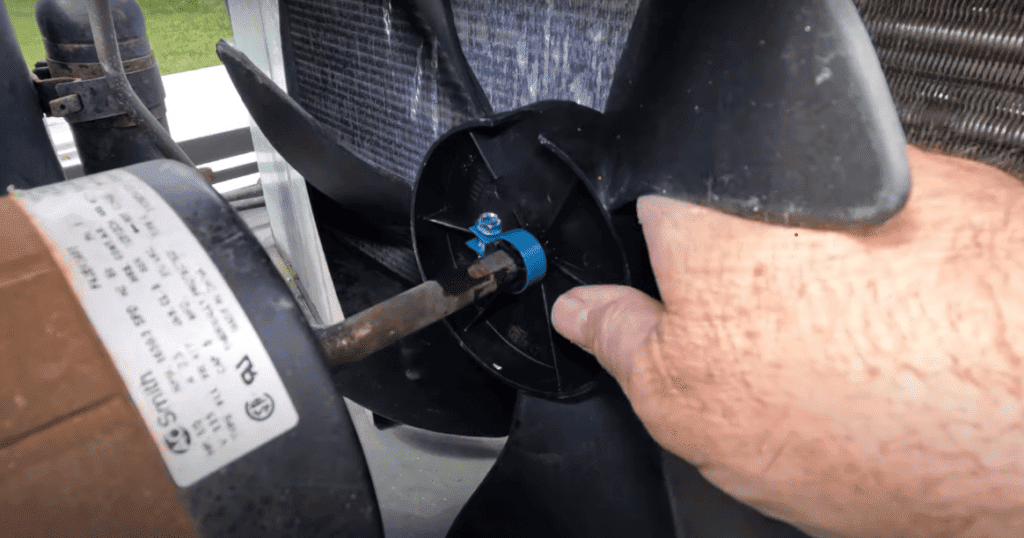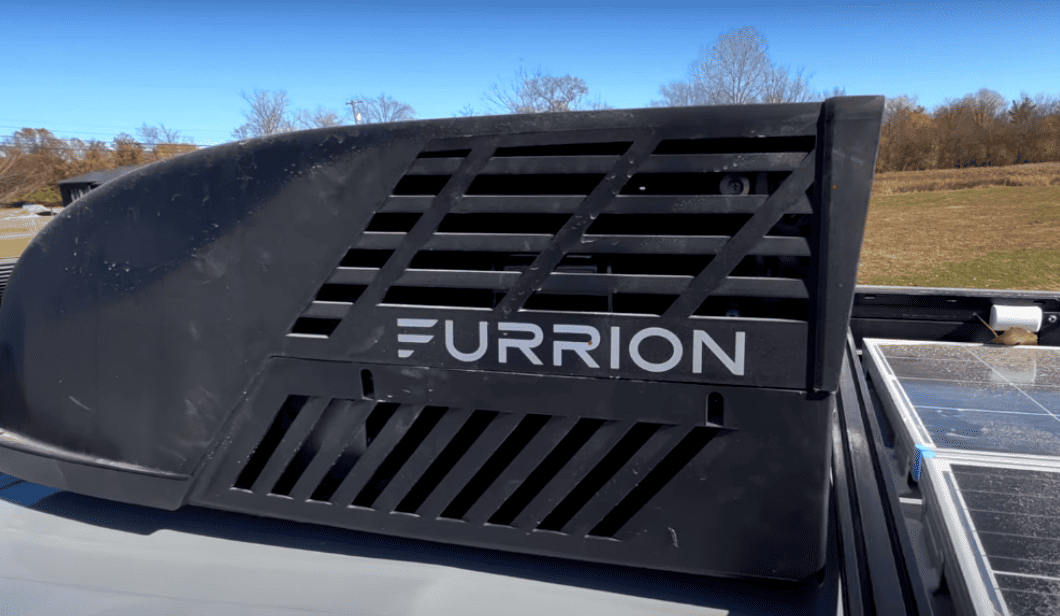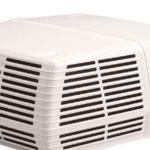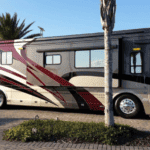Problems like low refrigerant levels, an unclean or clogged air filter, problems with the thermostat, or a broken compressor can cause trouble in your air conditioner’s cooling.
Do not be alarmed; you are not the only one in this perplexing situation.
I’ve taken my fair share of trips, so I can attest to the irritation of an ineffective RV air conditioner that comes along. I will examine possible problems including low refrigerants, airflow obstructions, and electrical malfunctions in this article, revealing the solutions to diagnosing.
Common Causes Of An RV Air Conditioner Not Blowing Cold
You can troubleshoot and resolve the issues affecting your RV air conditioner’s cooling capabilities by systematically addressing the common causes. Hence, without any delay, I will take you through these causes.
Refrigerant Levels

A confluence of causes usually causes refrigerant level malfunction. The RV air conditioner’s refrigerant may progressively leak or escape over time. Wear and tear on the refrigerant lines, couplings, or connections could cause this leak. Furthermore, inadequate installation or manufacturing flaws may be a factor in the gradual refrigerant loss.
The capacity of the air conditioner to absorb and release heat reduces with a drop in refrigerant content. The system’s heat exchange method depends on the refrigerant. It moves between the RV’s inside evaporator coils, where it collects heat from the surrounding air, and its exterior condenser coils, where it dissipates that heat. The system performs worse when the refrigerant levels lower because it is less effective at chilling the air.
Airflow Obstruction

A blocked or dirty air filter can impede the airflow, reducing the cooling effects. A layer of filth and grit accumulates, turning your previously immaculate filter into a reluctant collaborator in airflow restriction.
This airborne garrison grows, and its objective becomes a hindrance rather than a defense. The clogged filter impedes the smooth flow of air. This results in less movement of air within the RV. Your air conditioner fails to provide the promised respite when the path to cooling is blocked, leaving you in the physical heat of the moment.
Thermostat Issues

A malfunctioning thermostat can interfere with the thermostat’s capacity to precisely control the temperature inside the RV for several reasons. Some of them can be temperature sensor inaccuracy, which can cause the thermostat to either overcool or undercool the RV by misreading the temperature, dirt and debris accumulation, wear and tear, calibration issues, or electrical problems.
A malfunctioning thermostat can misread the temperature, which can lead to inadequate cooling.
Condenser Unit Problems

One common cause of condenser unit malfunctions is a slow build-up of dirt and debris on the condenser coils, which are essential in releasing heat from the refrigerant. These particles build up to create a coating that prevents heat from transferring as efficiently by acting as an insulating barrier.
The condenser coil’s intended function is to dissipate heat into the surrounding air; however, this ability is reduced when the coils are covered in dirt.
Electrical Trouble

The air conditioner’s ability to operate properly can be compromised by electrical or wiring. It can also manifest due to stemming from wear and tear, corrosion, loose connections, rodent damage, or manufacturer defects.
Ambient Temperature Impact

RV’s air conditioning system has difficulties with scorching weather that can interfere with regular operations. High outside temperatures put the RV air conditioner user under strain by increasing the heat load, reducing the effectiveness of heat exchange, stressing out vital parts, using more energy, and extending cooling cycles.
Heavy rain can cause damage to your RV air conditioner, which can lead to leakage. However, you can always troubleshoot those errors to fix the problem.
Fan Motor Malfunction

The fans in the motor of the air conditioner often malfunction due to overtime wear and tear, lack of lubrication, electrical problems, debris accumulation, etc. A key component in the distribution of cooled air is the fan motor. Hence inadequate circulation can result from a malfunctioning fan.
Ductwork Issues

Cool air can escape from damaged or poorly insulated ducts before it reach the desired interior. Problems with the ducting in your RV have a cascading effect on the delicate balance of your air conditioning system. The interior is less effectively and unevenly cooled as a result of breakdown.
Troubleshoot Your Air Conditioner

With the knowledge to identify the right cause of your RV air conditioner not cooling, you can solve the case of an air conditioner not blowing cold air. Below is a table to help you understand the troubleshooting steps for each crisis.
| Problem | Symptom | Solution |
| Refrigerant Levels | Warm air escapes through vents. | Look for refrigerant leaks and repair them. Recharge the system to restore optimal levels. |
| Airflow Obstruction | Inconsistent or feeble ventilation. | Investigate, clean, or replace the filter as a troubleshooting step. Verify that the air path is free of any tangible impediments. |
| Thermostat Issues | Inaccurate temperature readings are the symptom. | Adjust the thermostat or replace it if it’s not fixable. Confirm that it is configured correctly and operating following the manufacturer’s instructions. |
| Condenser Unit Problems | The system is operating, but there is little or no cooling at all. | Maintaining clean condenser coils is one way to prevent the disaster. Look for obvious damage, and take quick action to fix problems to prolong the system’s lifespan. |
| Electrical Troubles | The air conditioner has intermittent or no power. | Examine and tighten any loose wires as a troubleshooting step. Take care of any electrical wire damage. |
| Ambient Temperature Impact | Less effective cooling at very high temperatures. | Recognize that environmental factors can affect the efficiency of cooling systems. Always try to be updated with the weather reports. To lessen the effect, use reflective materials or blinds. |
| Fan Motor Malfunction | There is no air movement while the system is operating. | Confirm that the fan runs smoothly by keeping it clean, lubricated, and maintained regularly. If the malfunction persists, replace the fan. |
| Ductwork Issues | Produces warm patches of uneven cooling in your RV. | Examine the duct for damage, gaps, and leaks. Repair or replace the ducts according to damage effects. |
You can identify the underlying reasons why your RV air conditioner won’t blow cold air by going through a methodical troubleshooting process. A well-running system is confirmed by systematically addressing each problem, giving you back the coolness that characterizes a pleasant road.
Maintenance Of Your RV Air Conditioner

To guarantee your RV air conditioner operates at its best and lasts a long time, maintenance is essential. This is a thorough guide to maintaining a comfortable and cool RV:
| Process | Description |
| Regular Inspection | Visual Impacts: Check the entire unit regularly for any obvious damage, loose connections, or debris. Condenser Coils: Maintaining clean condenser coils will increase heat exchange efficiency by preventing dirt accumulation. |
| Air Filter Care | Cleaning/Replacement: As advised by the manufacturer, clean or replace the air filter regularly, usually every one to three months. Better Airflow: Proper airflow is confirmed by a clean filter, which improves cooling efficiency. |
| Ambient Temperature Consideration | Shade: If at all feasible, park your RV in a shaded place. Reduce the negative effects of high outside temperatures by using reflecting materials or blinds. Ventilation: To ease the load on the air conditioning system, provide adequate ventilation within the RV. |
| Regular Usage | Exercise The System: To keep the air conditioner from stagnating and to confirm that it continues to perform, run it occasionally even in the off-season. Timely Repairs: Take care of any difficulties as soon as possible to keep smaller ones from growing into larger ones. |
You may increase the longevity and effectiveness of your RV air conditioner by implementing these maintenance procedures into your routine.






![10 Best RV Surge Protectors & Electrical Management Systems for [currentyear] (30 & 50 Amp) 7 RV Surge Protectors_ Why Do You Need One, & Which Is The Best](https://www.rvingknowhow.com/wp-content/uploads/2020/04/RV-Surge-Protectors_-Why-Do-You-Need-One-Which-Is-The-Best.jpg)